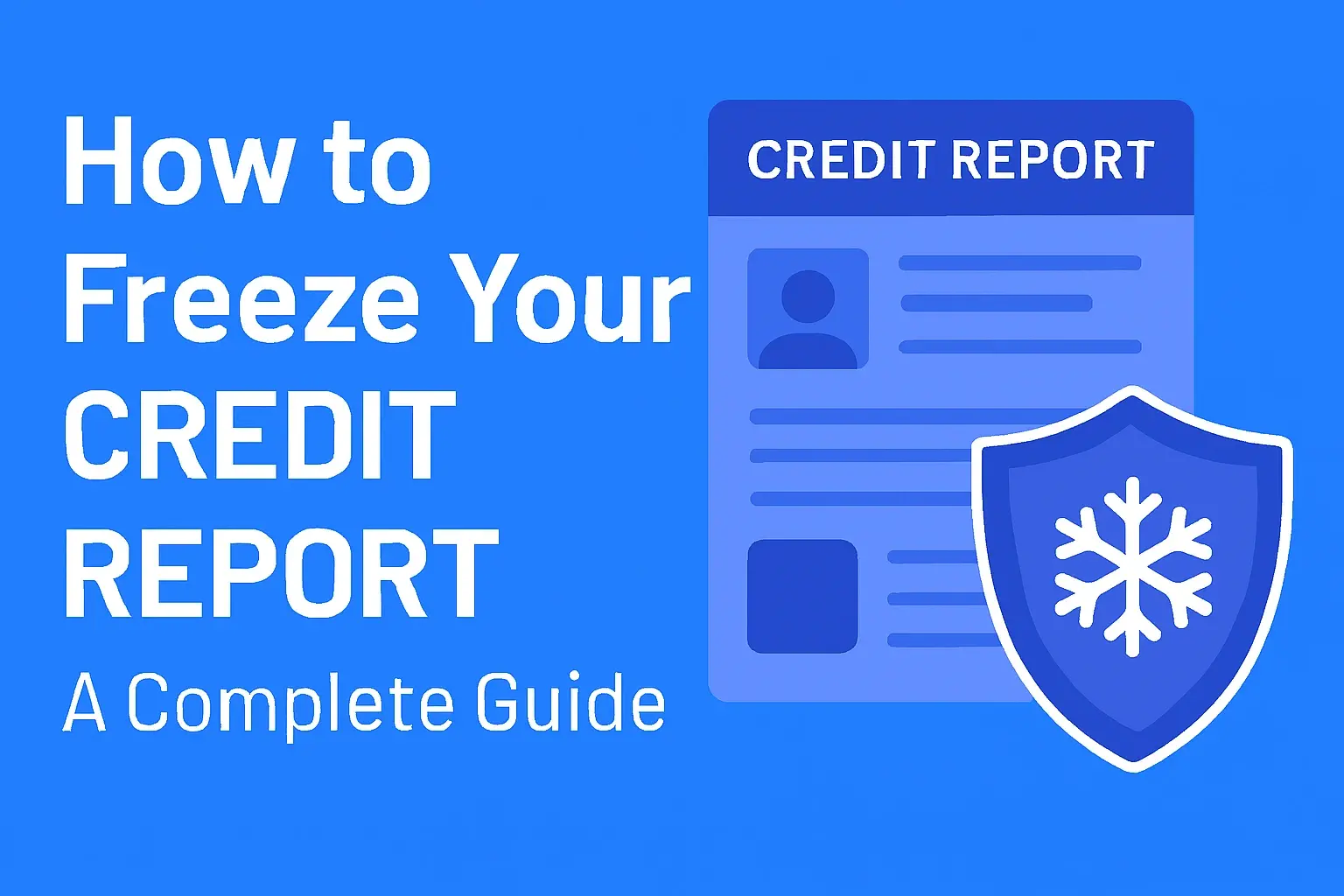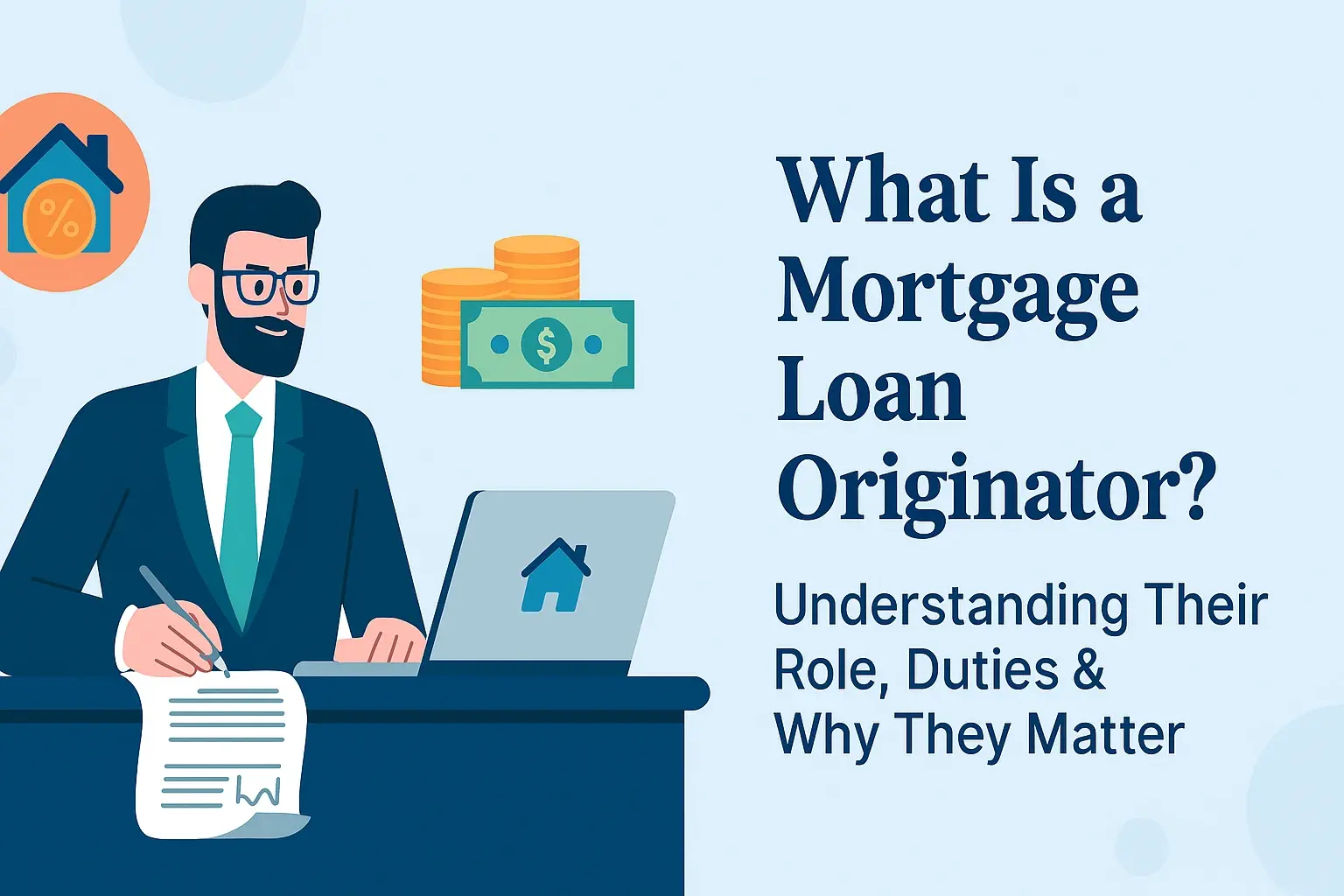-
Posted on: 24 Mar 2025

-
Unlock the dream of homeownership with a USDA loan, even if you're concerned about your credit score. This guide details the minimum credit score requirements and provides actionable strategies to achieve them, empowering you to secure financing for your rural or suburban home.
Understanding USDA Loans and Credit Score Requirements
The United States Department of Agriculture (USDA) Rural Development program offers a fantastic opportunity for individuals and families to purchase homes in eligible rural and suburban areas. These loans are designed to promote homeownership by providing attractive financing options, often with no down payment required. However, like any mortgage, they come with specific eligibility criteria that borrowers must meet. Among these, the credit score is a significant factor that lenders and the USDA will scrutinize. Understanding this requirement is the first step toward a successful application. In 2025, the landscape of mortgage lending continues to evolve, but the core principles of creditworthiness remain paramount for government-backed loan programs.
The Purpose and Benefits of USDA Loans
USDA loans, officially known as the USDA Single Family Housing Guaranteed Loan Program, are intended to revitalize rural communities by making homeownership more accessible. The primary benefits include:
- No Down Payment: This is arguably the most significant advantage, allowing borrowers to finance up to 100% of the home's appraised value.
- Competitive Interest Rates: USDA loans often feature lower interest rates compared to conventional mortgages.
- Reduced Mortgage Insurance: While there's an upfront guarantee fee and an annual fee, these are typically lower than the private mortgage insurance (PMI) required for conventional loans with less than 20% down.
- Flexible Credit Guidelines: Compared to some other loan types, USDA loans can be more forgiving regarding credit history, making them a viable option for a broader range of borrowers.
Why Credit Scores Matter for USDA Loans
Lenders use credit scores as a primary indicator of a borrower's credit risk. A higher credit score suggests a history of responsible borrowing and repayment, making the borrower a safer bet for the lender. For USDA loans, the credit score helps determine not only eligibility but also the interest rate and terms offered. While the USDA guarantees a portion of the loan, protecting lenders from some risk, they still expect borrowers to demonstrate a reasonable level of financial responsibility. In 2025, with economic fluctuations, lenders are particularly keen on borrowers with a solid financial track record.
The Role of the USDA in the Loan Process
It's important to distinguish between USDA direct loans and USDA guaranteed loans. The program we are discussing, which has minimum credit score considerations, is primarily the Guaranteed Loan Program. In this program, private lenders (banks, credit unions, mortgage companies) originate and service the loan, while the USDA guarantees a portion of it. This guarantee encourages lenders to offer more favorable terms. The USDA sets the general guidelines and eligibility requirements, including those related to credit, which lenders must adhere to. For 2025, the USDA continues to emphasize the importance of responsible lending practices within its guaranteed programs.
What is the Minimum Credit Score for a USDA Home Loan?
This is the question on many prospective USDA borrowers' minds. While the USDA doesn't set a strict, absolute minimum credit score that disqualifies all applicants, lenders typically look for a score of 640 or higher to streamline the approval process. However, this is not a rigid rule, and exceptions can and do occur. Understanding the nuances behind this number is crucial for anyone aiming to secure a USDA loan in 2025.
The 640 Benchmark: Why It's Important
A credit score of 640 is often considered the threshold for automated underwriting systems (AUS) to approve a loan with minimal manual review. When your credit score is at or above 640, your loan application can often be processed more quickly and efficiently. This is because the AUS, a sophisticated computer program, analyzes your credit report and other financial data to assess risk. A score of 640 generally indicates to the system that you have a good history of managing credit responsibly. For 2025, this benchmark remains a widely accepted guideline among USDA-approved lenders.
Can You Get a USDA Loan with a Score Below 640?
Yes, it is possible to get a USDA loan with a credit score below 640, but it's significantly more challenging. If your score falls below this benchmark, your loan application will likely require manual underwriting. This means a human underwriter will review your entire financial profile in detail, looking for compensating factors to offset the lower credit score. These compensating factors can include:
- Stable Employment History: A long and consistent work history in the same field.
- Low Debt-to-Income Ratio (DTI): Having manageable monthly debt payments relative to your gross income.
- Significant Savings or Assets: Demonstrating financial reserves beyond what's needed for closing costs.
- Positive Renting History: A record of paying rent on time consistently.
- Explanation for Credit Issues: A well-documented and justifiable reason for past credit problems (e.g., medical emergency, job loss).
In 2025, lenders are still willing to consider borrowers with scores in the high 500s (e.g., 580-620) if these compensating factors are strong. However, the approval is not guaranteed and will depend heavily on the individual lender's policies and the underwriter's discretion.
What About Scores Above 700?
If your credit score is 700 or higher, you are generally in an excellent position for a USDA loan. Lenders will view your application favorably, and you are likely to qualify for the best interest rates and terms available. A score above 700 indicates a very strong credit history and a low probability of default. This makes the underwriting process smoother and can lead to a quicker closing. For 2025, scores in this range are highly desirable for any mortgage, including USDA loans.
Factors Beyond the Minimum Credit Score
While the credit score is a critical component, it's not the only factor lenders consider when evaluating a USDA loan application. The USDA and its approved lenders look at your overall financial picture to ensure you can afford the home and repay the loan. In 2025, a holistic approach to underwriting is more important than ever, as lenders seek to mitigate risks in a dynamic economic environment.
Income and Employment Stability
Lenders need to be confident that you have a reliable source of income to make your monthly mortgage payments. They will typically look for:
- Consistent Employment: A history of stable employment, usually with the same employer or in the same industry for at least two years.
- Sufficient Income: Your income must be sufficient to cover your mortgage payments, property taxes, homeowners insurance, and any other debts. The USDA has specific income limits for its programs, which vary by location and household size. It's essential to check the current 2025 income limits for your area.
- Verifiable Income: You'll need to provide documentation such as pay stubs, W-2s, tax returns, and bank statements to verify your income.
Debt-to-Income Ratio (DTI)
Your DTI is a measure of your monthly debt obligations compared to your gross monthly income. It's expressed as a percentage. Lenders use DTI to assess your ability to manage monthly payments. There are two types of DTI:
- Front-end DTI (Housing Ratio): This ratio compares your proposed monthly housing expenses (principal, interest, taxes, insurance, and USDA fees) to your gross monthly income.
- Back-end DTI (Total Debt Ratio): This ratio compares all your monthly debt obligations (including housing expenses, car loans, student loans, credit card payments, etc.) to your gross monthly income.
For USDA loans, lenders generally prefer a back-end DTI of 41% or lower. However, with strong compensating factors (like a higher credit score or significant savings), some lenders might approve ratios up to 50%. In 2025, maintaining a lower DTI remains a key indicator of financial health.
Assets and Reserves
While USDA loans are known for their no-down-payment feature, having some savings or assets can significantly strengthen your application, especially if your credit score is below 640. Lenders may look for:
- Closing Costs: You will still need funds to cover closing costs, which can include appraisal fees, title insurance, origination fees, and other expenses. These typically range from 2% to 5% of the loan amount.
- Reserves: Lenders may require you to have a certain number of months' worth of mortgage payments in reserve after closing. This demonstrates that you have a financial cushion to fall back on in case of unexpected expenses or income disruptions. For 2025, having 3-6 months of mortgage payments in reserve is often viewed favorably.
Property Eligibility
Not all properties qualify for a USDA loan. The property must be located in a USDA-eligible rural or suburban area. You can check property eligibility on the USDA Rural Development website. Additionally, the home must meet USDA's minimum property standards, ensuring it is safe, sanitary, and structurally sound. An appraisal will be conducted to verify both the property's value and its condition.
Strategies to Improve Your Credit Score for USDA Loans
If your current credit score is below the desired 640 threshold, don't despair. There are proactive steps you can take to improve your creditworthiness before applying for a USDA loan. Focusing on these strategies can significantly increase your chances of approval and securing favorable loan terms in 2025.
1. Pay Your Bills On Time, Every Time
Payment history is the most significant factor influencing your credit score, accounting for about 35% of your FICO score. Late payments can severely damage your score. For 2025, make it a priority to pay all your bills (credit cards, loans, utilities, rent) by their due dates. Consider setting up automatic payments or calendar reminders to ensure you never miss a payment.
2. Reduce Your Credit Card Balances
Credit utilization ratio (CUR) is the amount of credit you're using compared to your total available credit. This accounts for about 30% of your FICO score. Aim to keep your CUR below 30% on each credit card and overall. Ideally, keeping it below 10% can have a substantial positive impact. If your balances are high, focus on paying them down. For example, if you have a $10,000 credit limit and owe $5,000, your CUR is 50%. Paying down $3,000 to owe only $2,000 would bring your CUR to 20%, significantly boosting your score.
3. Avoid Opening New Credit Accounts Unnecessarily
Each time you apply for new credit, a hard inquiry is placed on your credit report, which can slightly lower your score. While a few inquiries won't drastically impact your score, multiple new accounts in a short period can be a red flag. If you're planning to apply for a USDA loan, it's best to avoid applying for new credit cards, car loans, or other forms of credit until after your mortgage application is finalized. This advice remains critical in 2025.
4. Check Your Credit Reports for Errors
Mistakes on your credit report can unfairly lower your score. You are entitled to a free credit report from each of the three major credit bureaus (Equifax, Experian, and TransUnion) annually at AnnualCreditReport.com. Review these reports carefully for any inaccuracies, such as incorrect personal information, accounts you don't recognize, or erroneous late payment notations. If you find errors, dispute them immediately with the credit bureau and the creditor. Correcting errors can lead to a quick score improvement.
5. Consider a Secured Credit Card or Credit-Builder Loan
If you have a limited credit history or have had past credit problems, a secured credit card or a credit-builder loan can be effective tools. A secured credit card requires a cash deposit that becomes your credit limit. By using it responsibly and paying it off monthly, you can build a positive payment history. A credit-builder loan involves borrowing a small amount that is held in an account while you make payments. Once the loan is repaid, you receive the funds, and you've established a positive repayment record. These methods are proven strategies for 2025.
6. Avoid Closing Old Credit Accounts
Closing an old credit card account, especially one with a zero balance, can negatively impact your credit score in two ways: it reduces your total available credit (potentially increasing your credit utilization ratio) and it shortens the average age of your credit accounts. The length of your credit history is a factor in your score. It's generally better to keep older, unused accounts open with a zero balance, as long as they don't have annual fees that outweigh the benefits.
7. Be Patient and Consistent
Improving a credit score takes time and consistent effort. Don't expect overnight results. Focus on building good credit habits and maintaining them. The longer you demonstrate responsible credit behavior, the more your score will reflect it. For 2025, patience and a commitment to financial discipline are key.
Credit Score Myth-Busting for USDA Loan Applicants
The world of credit scores and mortgages is often shrouded in myths and misconceptions. For USDA loan applicants, understanding what's true and what's not can save time, reduce stress, and lead to a more successful application process. Let's debunk some common myths prevalent in 2025.
Myth 1: You need a perfect credit score for a USDA loan.
Fact: This is false. As discussed, while a higher score is always better, USDA loans are designed to be accessible. Many borrowers with scores in the mid-600s, and even some below, can qualify with compensating factors. The USDA's goal is to promote homeownership, not to exclude all but the most credit-perfect individuals.
Myth 2: All lenders have the same minimum credit score requirement for USDA loans.
Fact: This is also false. While 640 is a common benchmark for automated approval, individual lenders may have their own overlays or stricter requirements. Conversely, some lenders might be more flexible and willing to work with borrowers who have scores in the high 500s if other aspects of their financial profile are exceptionally strong. It's crucial to shop around and speak with multiple USDA-approved lenders in 2025.
Myth 3: Checking your own credit score lowers it.
Fact: This is a common misconception. Checking your own credit score (often called a "soft inquiry") using free credit monitoring services or by requesting your own report does not affect your credit score. Only "hard inquiries," which occur when a lender checks your credit as part of a loan application, can have a minor, temporary impact. So, feel free to check your score regularly to monitor your progress.
Myth 4: You can instantly raise your credit score by disputing every item on your report.
Fact: Disputing errors is important, but disputing legitimate information, even if it's negative, is unlikely to result in its removal and can sometimes lead to more scrutiny. Focus on disputing factual inaccuracies. For legitimate negative information, the best way to improve your score is through consistent, positive financial behavior over time, such as timely payments and low credit utilization.
Myth 5: Closing old credit cards will improve your score.
Fact: As mentioned earlier, closing old accounts can actually hurt your score by reducing your average credit history length and potentially increasing your credit utilization ratio. It's generally advisable to keep older, unused accounts open with a zero balance, especially if they don't carry annual fees.
Myth 6: A single late payment will ruin your chances of getting a USDA loan.
Fact: While a single late payment can lower your score, it's usually not an automatic disqualifier, especially if it's an isolated incident and occurred a while ago. Lenders look at your overall credit history. If you have a history of on-time payments and the late payment is an outlier, especially if you can provide a reasonable explanation, it might be overlooked, particularly if other aspects of your application are strong. However, multiple late payments or a pattern of delinquency will be a significant issue.
Myth 7: USDA loans are only for very low-income individuals.
Fact: While USDA loans are targeted towards moderate- to low-income households in eligible areas, there are income limits, not strict income floors. This means there's an upper limit to the income you can earn to qualify, but you don't have to be at the absolute bottom of the income scale. The income limits are adjusted annually based on the cost of living in specific areas. For 2025, check the USDA's income eligibility tool for your region.
The Application Process and How Your Credit Score is Evaluated
Understanding how your credit score is evaluated during the USDA loan application process can help you prepare effectively. The evaluation isn't just a single number; it's part of a comprehensive review. In 2025, the process remains largely consistent, focusing on risk assessment.
Step 1: Pre-Qualification and Pre-Approval
Before you start seriously house hunting, it's wise to get pre-qualified or pre-approved. This involves a lender reviewing your financial information, including your credit report, to estimate how much you can borrow. Pre-approval is more rigorous than pre-qualification and involves a deeper dive into your finances, including verification of income and assets. During this stage, your credit score is a primary focus.
Step 2: The Loan Application
Once you've found a home and your offer has been accepted, you'll formally apply for the USDA loan. This involves submitting a detailed application and a significant amount of documentation.
Step 3: Underwriting - Where Credit is Scrutinized
This is the core of the approval process. Underwriters will review your entire financial profile. Here's how your credit score and report are evaluated:
- Automated Underwriting System (AUS): If your credit score is 640 or above, your application will likely go through an AUS. This system analyzes your credit report, income, assets, and debts to determine if the loan meets USDA and lender guidelines. A favorable AUS finding significantly speeds up the process.
- Manual Underwriting: If your credit score is below 640, or if there are other complexities in your application, it will be sent for manual underwriting. A human underwriter will meticulously review your credit report, looking for patterns, explanations for any negative items, and strong compensating factors. They will assess:
- The nature of any negative items: Were they isolated incidents (e.g., a single medical collection) or a pattern of delinquency?
- The recency of negative items: How long ago did these issues occur? More recent issues are viewed more critically.
- Your overall credit history: How long have you had credit? How many accounts do you have?
- Your payment history: The consistency of your on-time payments.
- Your credit utilization: How much of your available credit are you using?
For 2025, underwriters are trained to look beyond just the score and understand the borrower's financial story.
Step 4: The Credit Report Details Matter
Beyond the score itself, the underwriter will examine the details within your credit report:
- Public Records: Bankruptcies, foreclosures, judgments, and liens are significant red flags. The USDA has specific waiting periods after these events before you can qualify. For example, after a Chapter 7 bankruptcy, you typically need to wait 3 years.
- Collections: The age and amount of any outstanding collections are considered. Small, old collections might be manageable, especially if you can provide proof of payment or a satisfactory explanation.
- Charge-offs: Debts that a creditor has written off as uncollectible are viewed very negatively.
- Late Payments: The frequency and recency of late payments are crucial.
- Foreclosures/Repossessions: Similar to bankruptcies, these require a waiting period.
Step 5: Compensating Factors
If your credit score is borderline or if there are minor blemishes on your report, strong compensating factors can sway the underwriter's decision. These include:
- Significant savings or reserves.
- A very low debt-to-income ratio.
- A stable and lengthy employment history.
- A substantial down payment (though not required for USDA).
- Positive rental history.
- A clear and documented explanation for past credit issues.
In 2025, demonstrating these strengths can be the key to overcoming a slightly lower credit score.
Step 6: Final Approval and Closing
Once underwriting is complete and all conditions are met, your loan will be approved. The final steps involve appraisal, title search, and then the closing, where you sign the final loan documents and receive the keys to your new home.
What If My Credit Score is Too Low for a USDA Loan?
If, after reviewing your credit and financial situation, you find that your credit score is too low to meet the lender's requirements for a USDA loan, it's important not to give up. There are alternative paths and strategies you can pursue. In 2025, the housing market presents various opportunities, and patience can pay off.
Option 1: Work on Improving Your Credit Score
This is the most direct approach. As detailed in the "Strategies to Improve Your Credit Score" section, focus on:
- Paying all bills on time.
- Reducing credit card balances.
- Disputing any errors on your credit report.
- Avoiding new credit inquiries until your score improves.
Give yourself a timeframe of 6-12 months to actively work on these areas. Consistent effort can lead to a significant score increase, making you eligible for a USDA loan.
Option 2: Explore Other Loan Programs
If improving your credit score to the USDA threshold will take too long, or if you need to move sooner, consider other mortgage options that may have more flexible credit requirements:
- FHA Loans: Insured by the Federal Housing Administration, FHA loans are known for their lower credit score requirements. Borrowers with credit scores as low as 580 can often qualify for a 3.5% down payment, and some lenders may work with scores down to 500 with a larger down payment.
- VA Loans: For eligible veterans, active-duty military personnel, and surviving spouses, VA loans offer excellent benefits, including no down payment and no private mortgage insurance. Credit score requirements are generally more lenient than conventional loans, often similar to or even better than USDA loans, with many lenders not having a strict minimum score.
- Conventional Loans with Lower Credit Scores: While conventional loans typically require higher credit scores (often 620+), some lenders offer programs for borrowers with scores in the high 500s, though these usually come with higher interest rates and require a larger down payment (e.g., 10-20%).
- State and Local Housing Programs: Many states and local municipalities offer first-time homebuyer programs that provide down payment assistance and may have more flexible credit guidelines. Research programs available in your specific area.
In 2025, these alternatives can be excellent stepping stones to homeownership.
Option 3: Seek a Co-Signer
If you have a family member or close friend with excellent credit and sufficient income who is willing to co-sign your loan, this could help you qualify. A co-signer essentially agrees to be equally responsible for the loan. Their strong credit history and income can offset your lower score. However, be aware that if you fail to make payments, it will negatively impact your co-signer's credit as well. This is a significant commitment for both parties.
Option 4: Save for a Larger Down Payment
While USDA loans don't require a down payment, having one can significantly improve your chances of qualifying for other loan types or even a USDA loan with a lower score if the lender allows it as a compensating factor. A larger down payment reduces the lender's risk, making them more willing to overlook a lower credit score. Even a few thousand dollars can make a difference.
Option 5: Work with a Mortgage Broker Specializing in Lower Credit Scores
Some mortgage brokers specialize in helping borrowers with less-than-perfect credit find suitable loan options. They have established relationships with various lenders and may know which ones are more flexible with credit score requirements for USDA or other loan programs.
Option 6: Address Derogatory Marks Directly
If your credit report contains specific derogatory marks (e.g., collections, judgments), work to resolve them. This might involve paying off old debts, negotiating settlements, or developing a payment plan. Once resolved, ensure the credit bureaus update your report accordingly. Sometimes, lenders will require proof of resolution for these items before approving a loan.
The key is to be proactive and explore all available avenues. The path to homeownership might require adjustments, but with persistence, it remains achievable in 2025.
Getting Started with Your USDA Loan Journey
Embarking on the path to homeownership with a USDA loan requires preparation and understanding. By focusing on your credit score and other financial factors, you can significantly improve your chances of success. Here’s a roadmap to guide you through the process in 2025.
1. Assess Your Current Credit Score and Report
Your first step should always be to understand your starting point. Obtain your credit reports from all three major bureaus and check your credit score. Many banks and credit card companies offer free credit score monitoring. Identify any areas that need improvement, such as high balances or late payments.
2. Determine USDA Loan Eligibility
Beyond credit scores, confirm your eligibility based on income limits and property location. You can use the USDA's online tools to check if the property you're interested in is in an eligible area and if your household income meets the program's requirements for 2025.
3. Create a Credit Improvement Plan
If your credit score is below 640, develop a concrete plan to improve it. This involves implementing the strategies discussed earlier: consistent on-time payments, reducing credit utilization, and addressing any errors. Set realistic goals and timelines.
4. Save for Closing Costs and Reserves
Even with no down payment, you'll need funds for closing costs and potentially mortgage reserves. Start saving early. Calculate an estimate of these costs and incorporate them into your budget.
5. Research USDA-Approved Lenders
Not all lenders offer USDA loans, and those that do may have slightly different requirements or levels of expertise. Shop around and compare offers from several USDA-approved lenders. Ask about their minimum credit score requirements, their underwriting process for lower scores, and any specific overlays they might have.
6. Get Pre-Approved
Once you've chosen a lender and have a good understanding of your financial standing, get pre-approved for a USDA loan. This process involves a thorough review of your finances and will give you a clear picture of how much you can afford, strengthening your position when making an offer on a home.
7. Work with a Real Estate Agent Experienced in USDA Loans
A real estate agent familiar with USDA loan requirements can be invaluable. They can help you find eligible properties, navigate the offer process, and ensure that all contingencies are met, including those related to financing.
8. Be Prepared for the Underwriting Process
Understand that the underwriting process is thorough. Be ready to provide all requested documentation promptly and answer any questions the underwriter may have. Transparency and responsiveness are key.
Achieving the minimum credit score for a USDA home loan is a goal that is well within reach for many aspiring homeowners. By understanding the requirements, actively working to improve your credit, and exploring all available options, you can successfully navigate the process and secure financing for your dream home in an eligible rural or suburban area. The journey may require diligence, but the reward of homeownership is well worth the effort.
In conclusion, the minimum credit score for a USDA home loan is not a rigid barrier but a guideline. While a score of 640 or above streamlines the process, borrowers with lower scores can still qualify through manual underwriting, provided they demonstrate strong compensating factors. Focusing on consistent, responsible financial behavior—paying bills on time, reducing debt, and maintaining a clean credit report—is paramount. If your score is currently below the target, dedicate time to improving it, or explore alternative loan programs like FHA or VA loans. By taking a proactive, informed approach, you can overcome credit score challenges and achieve your goal of USDA homeownership in 2025.
Faq
1. What is the minimum credit score required for a USDA home loan?
The USDA home loan program typically requires a minimum credit score of 640 for automated approval through the USDA system. However, applicants with lower scores may still qualify through manual underwriting, but additional documentation and stronger financial stability may be required.
2. How can I improve my credit score to qualify for a USDA loan?
To boost your credit score, focus on paying bills on time, reducing outstanding debts, avoiding new credit inquiries, and correcting any errors on your credit report. Maintaining a low credit utilization ratio and keeping older credit accounts open can also positively impact your score over time.
3. Can I get a USDA loan with a credit score below 640?
Yes, it is possible. Applicants with scores below 640 may be considered through manual underwriting, where the lender reviews the overall financial profile, including income stability, savings, and debt-to-income ratio. This process can sometimes approve borrowers with scores as low as 580, depending on other compensating factors.
4. How long does it take to improve my credit score for a USDA loan?
Improving your credit score can take a few months to over a year, depending on your current credit situation. Paying down high balances, making on-time payments, and addressing any negative marks on your report can gradually increase your score to meet USDA requirements.
5. Does the USDA loan consider other factors besides credit score?
Yes. In addition to credit score, USDA lenders consider your debt-to-income ratio, employment history, income stability, and savings for closing costs. Even if your credit score is at the minimum threshold, strong financial health in these areas can improve your chances of loan approval.











